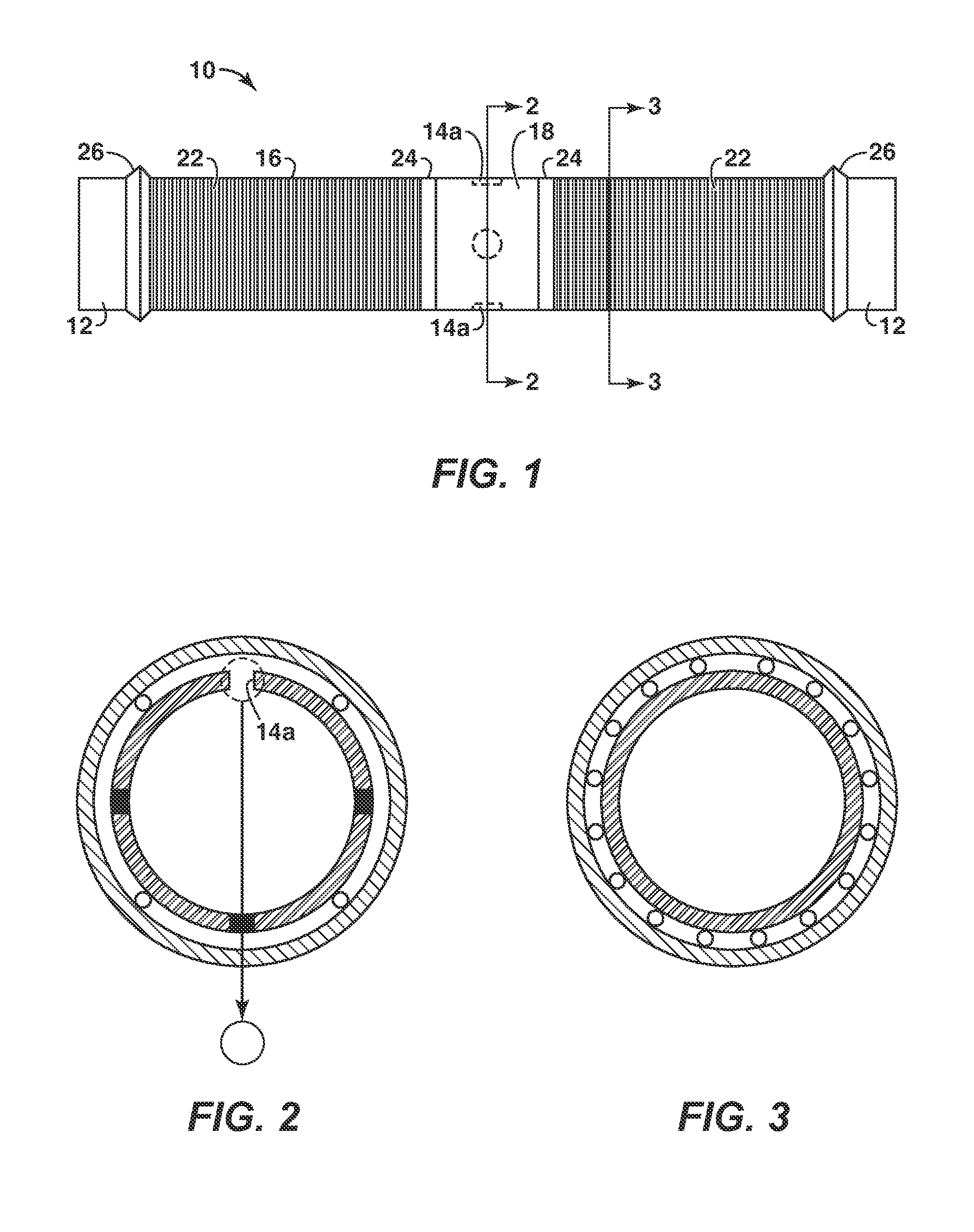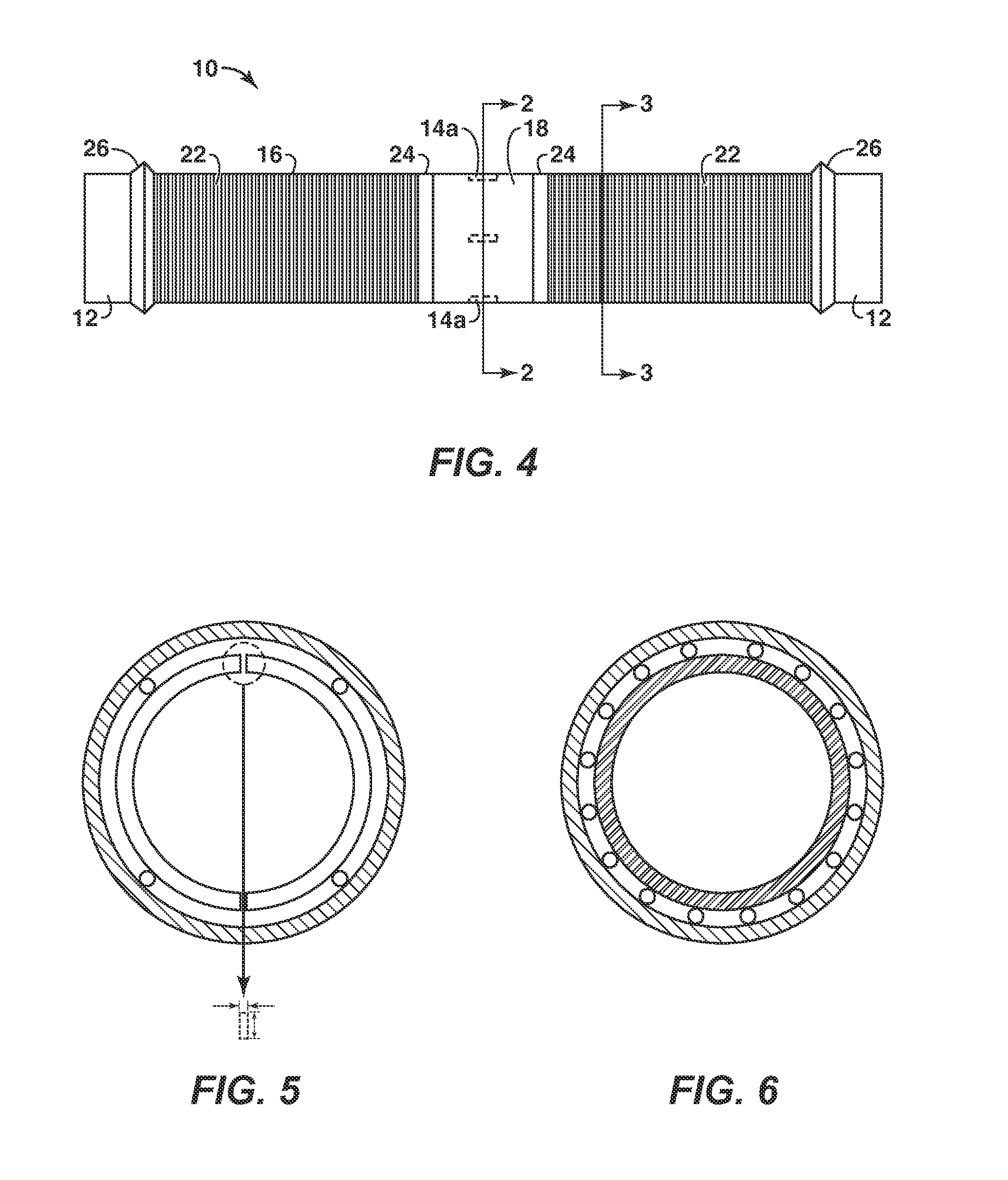Well completion for viscous oil recovery
- Summary
- Abstract
- Description
- Claims
- Application Information
AI Technical Summary
Benefits of technology
Problems solved by technology
Method used
Image
Examples
Embodiment Construction
Definitions
[0054]The term “viscous oil” as used herein means a hydrocarbon, or mixture of hydrocarbons, that occurs naturally and that has a viscosity of at least 10 cP (centipoise) at initial reservoir conditions. Viscous oil includes oils generally defined as “heavy oil” or “bitumen”. Bitumen is classified as an extra heavy oil, with an API gravity of about 10° or less, referring to its gravity as measured in degrees on the American Petroleum Institute (API) Scale. Heavy oil has an API gravity in the range of about 22.3° to about 10°. The terms viscous oil, heavy oil, and bitumen are used interchangeably herein since they may be extracted using similar processes.
[0055]“In situ” is a Latin phrase for “in the place” and, in the context of hydrocarbon recovery, refers generally to a subsurface hydrocarbon-bearing reservoir. For example, in situ temperature means the temperature within the reservoir. In another usage, an in situ oil recovery technique is one that recovers oil from a r...
PUM
 Login to View More
Login to View More Abstract
Description
Claims
Application Information
 Login to View More
Login to View More - R&D
- Intellectual Property
- Life Sciences
- Materials
- Tech Scout
- Unparalleled Data Quality
- Higher Quality Content
- 60% Fewer Hallucinations
Browse by: Latest US Patents, China's latest patents, Technical Efficacy Thesaurus, Application Domain, Technology Topic, Popular Technical Reports.
© 2025 PatSnap. All rights reserved.Legal|Privacy policy|Modern Slavery Act Transparency Statement|Sitemap|About US| Contact US: help@patsnap.com



